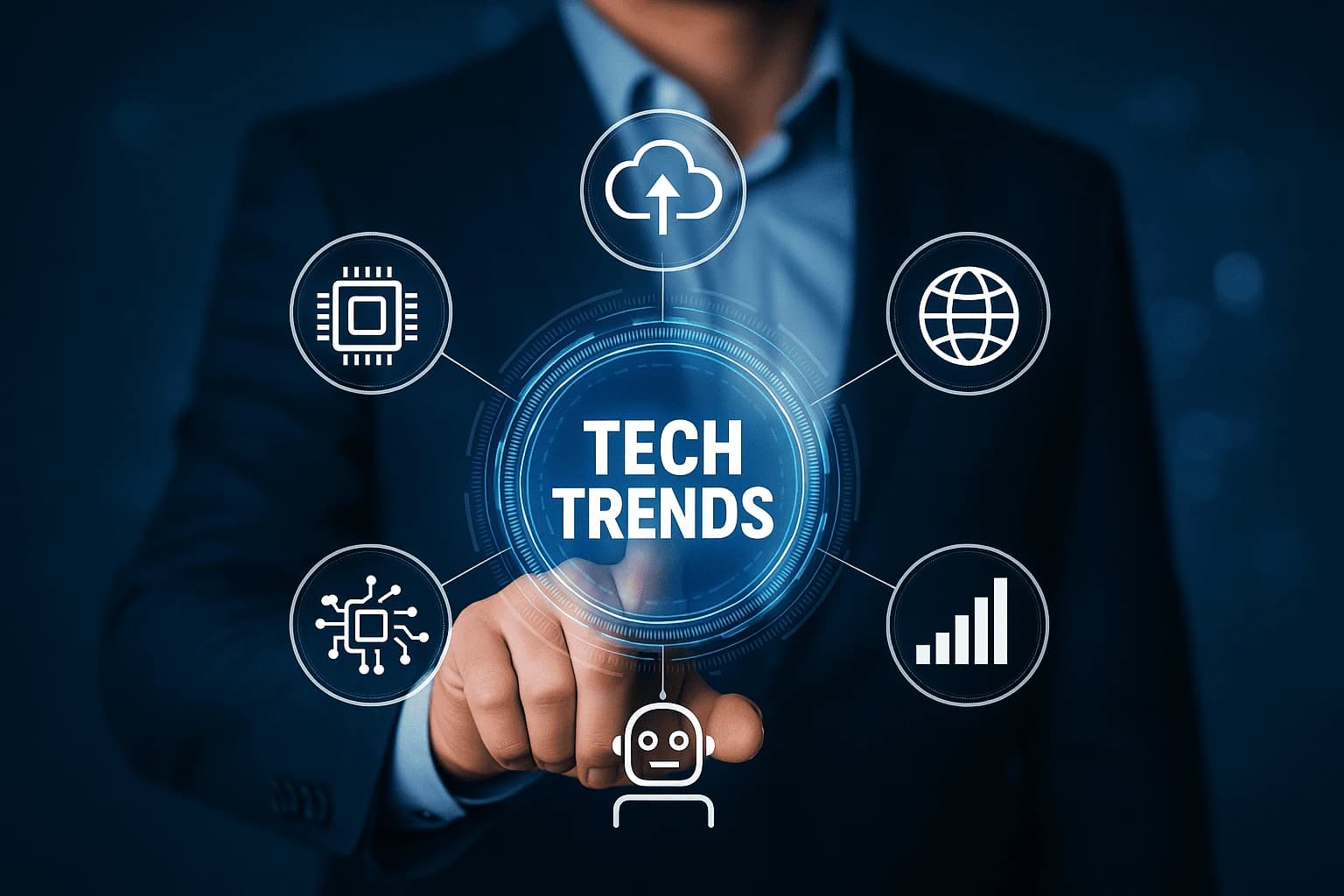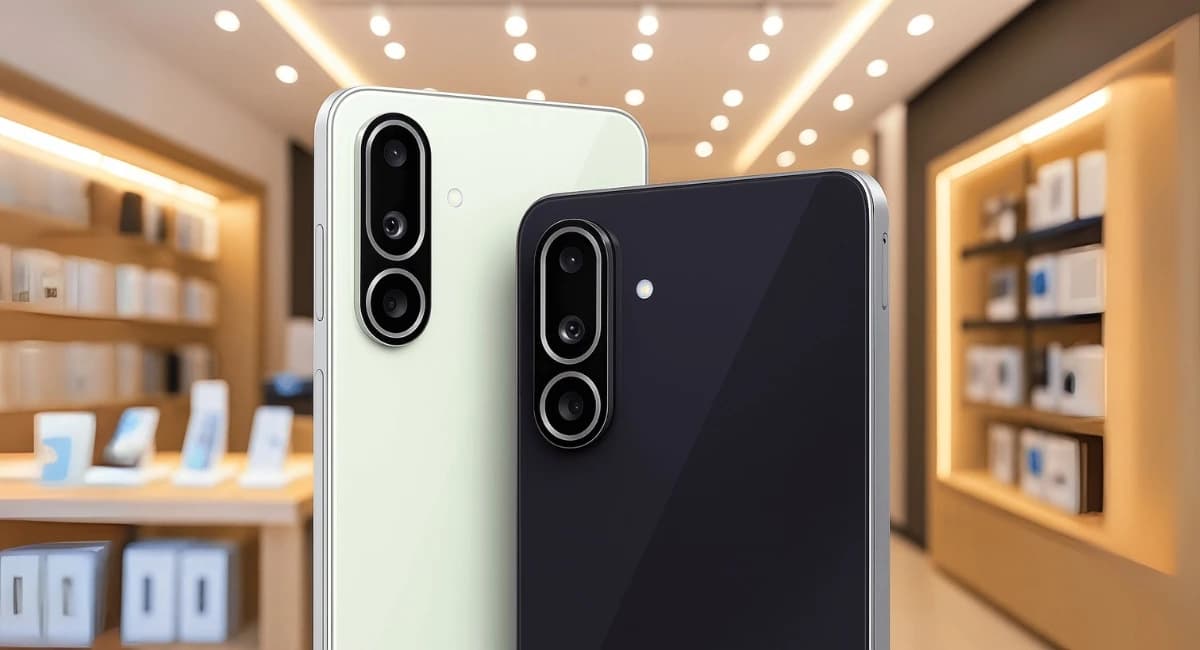
* All product/brand names, logos, and trademarks are property of their respective owners.
Technology is changing faster than ever. What once felt like science fiction—AI assistants that think for themselves, computers that solve problems too complex for the human brain, or cities that respond to our needs in real-time—is now becoming part of everyday life. In 2025, we’re not just witnessing change; we’re living inside a technological revolution.
Whether you're a student, a startup founder, a healthcare professional, or simply someone curious about the future, understanding today’s tech trends isn’t optional—it’s essential. These innovations are reshaping how we work, communicate, stay healthy, and solve global problems. From artificial intelligence becoming more “agentic” to quantum computing stepping out of the lab, the tools of tomorrow are already here.
And it’s not just happening in Silicon Valley. From Lagos to Lahore, Seoul to São Paulo, new technologies are impacting lives and creating opportunities in every corner of the globe. Governments are investing in green tech. Schools are adopting VR for virtual classrooms. Healthcare startups are using AI to detect diseases earlier than ever. Even outer space is getting crowded, with satellite internet promising global connectivity.
In this blog, we’ll walk you through the most important tech trends to watch in 2025—explained simply, with real-world examples. We’ll explore how these innovations are not just transforming industries, but also your personal life. This isn’t just for tech geeks or business executives—this is for anyone who wants to understand the world we’re all stepping into.
So let’s dive into the future—because it’s already here.
Technology in 2025 is not just advancing—it’s transforming the way we live, work, and think. Some innovations are set to redefine entire industries, while others will quietly power the next wave of everyday tools. Let’s explore three game-changing technologies leading this global tech evolution.
Artificial Intelligence has evolved beyond just responding to commands—it now acts independently. This is called agentic AI, where systems can make decisions, solve problems, and manage workflows on their own. Think of it as moving from Siri or Alexa to an AI that can organize your calendar, book meetings, analyze data, and suggest improvements—without being told to.
Global businesses are already adopting agentic AI. Companies like Google and Microsoft are embedding autonomous AI into their cloud platforms, while startups are using it to automate customer service, logistics, and even software development. These AI “agents” can save time, cut costs, and improve accuracy—all without human micromanagement.
Quantum computing is no longer just a lab experiment. In 2025, we’re seeing hybrid systems that combine classical and quantum computing power to tackle problems previously considered unsolvable.
For example, IBM and Google are racing to build commercially viable quantum processors. Meanwhile, financial firms are exploring how quantum algorithms can optimize investment portfolios in seconds. In healthcare, quantum simulations are helping researchers model complex molecules for drug discovery faster than ever.
Countries like China, the US, and Germany are pouring billions into quantum R&D, knowing that whoever leads in this space could control the next computing revolution.
As the climate crisis intensifies, green technology is not just a trend—it’s a necessity. In 2025, tech companies are prioritizing energy-efficient design, carbon-aware software, and circular manufacturing practices.
From Google using AI to cut data center energy usage, to chipmakers like ARM focusing on ultra-low-power processors, sustainability is baked into innovation. Governments are also stepping in—Europe’s Green Deal and similar initiatives in Canada and Japan are pushing the tech sector toward a more eco-conscious future.
Sustainable tech isn’t just better for the planet—it’s becoming a competitive advantage in a world that values both innovation and responsibility.
Some of the most powerful technologies in 2025 are the ones you don’t even notice. Known as ambient or invisible tech, these innovations are seamlessly integrated into our environments—working silently in the background to make life smarter, safer, and more connected.
Imagine walking into your home and having the lights adjust to your mood, the temperature set based on your past preferences, and your favorite playlist gently starting—all without saying a word. That’s ambient computing in action.
This technology uses sensors, AI, and contextual awareness to anticipate your needs and respond automatically. In cities like Amsterdam and Singapore, ambient computing powers traffic systems that reduce congestion in real time. In Tokyo, smart offices adjust lighting and air quality based on the number of people in the room.
Even your smartphone is starting to act more ambient—suggesting replies, organizing your day, and adapting based on location or behavior. This tech is all around us, it’s only growing more intelligent and integrated.
The Internet of Things (IoT) is the backbone of invisible tech. With billions of devices connected globally—from refrigerators and wearables to factory robots and agricultural drones—IoT is creating a mesh network of sensors that gather and share data in real time.
In healthcare, wearable devices track vital signs and send alerts before emergencies happen. In agriculture, smart irrigation systems in places like India and Brazil use soil sensors to save water and increase crop yields. In logistics, companies like FedEx and Maersk use IoT sensors to track packages and optimize delivery routes globally.
What makes 2025 different is the scale and intelligence of these systems. Powered by 5G and soon 6G networks, IoT devices can now interact faster and more efficiently, enabling truly real-time responsiveness.
These invisible technologies are becoming the silent heroes of modern life—enhancing comfort, safety, and efficiency without ever needing our attention.
Technology in 2025 isn’t just changing industries—it’s reshaping how we live, learn, work, and stay healthy. Welcome to the new digital lifestyle, where tech is not only smart but also deeply personal, immersive, and creative.
Healthcare is no longer one-size-fits-all. With the rise of AI-powered diagnostics and wearable tech, medical care is becoming more personalized and predictive than ever before.
Smartwatches and health trackers now monitor heart rate, sleep patterns, oxygen levels, and more—alerting users (and doctors) to potential issues before symptoms even show. In the US and UK, AI tools are assisting doctors in diagnosing diseases like cancer and diabetes earlier and more accurately. In India and Africa, mobile health apps powered by AI are providing rural communities with better access to healthcare advice and monitoring.
Genomic data is also driving personalized treatment plans. Companies like 23andMe and Illumina are offering insights into how your DNA affects your health, helping doctors customize treatments that work best for you.
The traditional 9-to-5 office is rapidly being replaced by immersive digital workspaces. Thanks to advancements in AR (Augmented Reality) and VR (Virtual Reality), teams across the world can collaborate in 3D environments—no physical office required.
In 2025, companies like Meta and Microsoft are offering virtual office platforms where coworkers “meet” in digital rooms, interact with shared virtual objects, and even present in holographic formats. In education, schools and universities in countries like South Korea, Canada, and Australia are using VR to teach complex subjects like anatomy, history, and engineering with hands-on simulations.
This isn’t just convenient—it’s also more engaging and accessible, particularly for remote or underserved regions.
AI is no longer just a tool for automation—it’s becoming a partner in creativity. From writing stories to generating art, music, and even code, generative AI tools are helping creators bring their ideas to life faster than ever.
Platforms like ChatGPT, Midjourney, and DALL·E are enabling anyone—regardless of skill level—to create high-quality content in minutes. Designers in Pakistan, musicians in Sweden, and marketers in Brazil are using AI to brainstorm, draft, and produce creative work on a global scale.
This wave of accessible creativity is democratizing innovation, allowing more people to become makers, storytellers, and entrepreneurs in the digital age.
As technology evolves, the backbone that supports it—connectivity and cybersecurity—must evolve too. In 2025, we’re witnessing massive upgrades to global digital infrastructure, along with smarter, AI-driven protection systems that defend against new-age threats.
We’ve all heard of 5G—but 2025 is paving the way for 6G and ultra-fast, low-latency connectivity. This next-generation network promises speeds up to 100 times faster than 5G and will enable more real-time applications, from fully immersive VR to autonomous transportation.
At the same time, satellite internet is filling the connectivity gaps in rural and remote areas. SpaceX’s Starlink and the UK’s OneWeb are deploying low-Earth orbit (LEO) satellites to deliver broadband to communities that previously had no access. In places like rural Pakistan, sub-Saharan Africa, and parts of South America, this is opening up opportunities in education, healthcare, and remote work.
This kind of global infrastructure expansion is helping close the digital divide—bringing billions more people into the online economy and digital world.
With all this new connectivity comes a new level of risk. Cyberattacks are getting more sophisticated, and businesses and governments are responding with smarter, AI-driven defenses.
In 2025, cybersecurity is no longer just about firewalls—it’s about zero trust architecture, real-time AI monitoring, and quantum-safe encryption. Companies like CrowdStrike and Palo Alto Networks are using AI to detect threats as they emerge, stopping cybercriminals before they can act.
As quantum computing becomes more mainstream, there’s also a push to develop encryption methods that can withstand quantum attacks. Nations like the US, China, and members of the EU are investing in post-quantum cryptography to protect everything from personal data to national infrastructure.
Cybersecurity is now mission-critical—not just for businesses, but for individuals too. In this interconnected world, your data, privacy, and digital identity are only as safe as the systems protecting them.
From invisible sensors to intelligent AI agents, from quantum computing to sustainable design—technology in 2025 is more powerful, more global, and more integrated into our lives than ever before. These aren’t just passing fads or buzzwords; they’re signals of deep and lasting transformation.
We’ve explored how agentic AI is becoming your digital teammate, how ambient tech is blending into daily environments, and how generative AI is unlocking creativity for everyone. We’ve seen how quantum computing, 6G connectivity, and cybersecurity upgrades are reshaping the digital landscape. And we’ve looked at how healthtech, neurotech, and biotech are changing what it means to be human.
But here's the most important takeaway: These trends aren’t just for tech experts—they’re for all of us. Whether you’re a student, a startup founder, a teacher, a freelancer, or just someone who wants to stay informed, understanding these changes gives you the power to adapt, make smarter decisions, and even lead in your field.
So what should you do next?
Stay curious.
Keep learning.
Follow innovation, not just headlines.
And most importantly—be open to change.
Because the future isn’t waiting—it’s already happening all around us.
If this blog helped you better understand where technology is heading, don’t forget to share it, subscribe for more updates, and join the conversation about how tech is shaping our world.

1 September 2025
No comments yet. Be the first to comment!